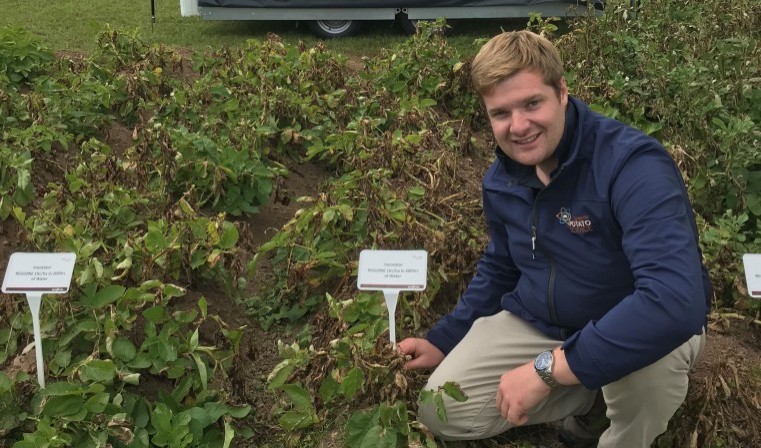New drone technology could help make proactive desiccation application decisions, according to Syngenta Application Specialist, James Thomas, speaking at Potatoes in Practice.
Pre-desiccation imaging of PiP trials near Dundee with an indeterminate variety, Innovator, compared to a vigorously growing foliage of Markies, highlighted where growers could tailor water volume and nozzle selection for most effective results with Reglone.
“With the determinate variety, which may well already be senescing – particularly after the hot dry summer of 2018 – using just 200 l/ha of water achieved excellent results in opening up the crop,” advocated James.
“With large, ‘toppy’ varieties with lots of foliage, however, the trial plots have clearly shown that 400 l/ha remains more appropriate,” he pointed out.
The PiP demonstration plots were further assessed using ImageJ software (above), to assess crop vigour following Reglone at 1.0 l/ha at different water volumes.
The Innovator had been opened up from 70% green haulm cover in untreated, to just 18% with the 200 l/ha application after 14 days. With the untreated Markies still at 90% green area, the treatment in 400 l/ha had opened the crop up to 43% of the canopy cover, but only 53% when applied at 200 l/ha.
Drift reduction opportunity
This season’s PiP demonstration, allied to work by the Syngenta Application Club programme with sprayer operators, has further evaluated the potential for better leaf targeting with 90% Drift Reduction Technology (DRT) nozzles.
“We have seen performance continue to improve with testing new designs, such as the Lechler twin outlet nozzle. There is clearly potential to give good foliar coverage for desiccation, along with better targeting by reducing risk of drift; up to 90% at 2-bar, and 75% at up to 8-bar,” James advised.
“Adoption of drift reduction technology application is also an increasingly important element of regulatory product re-registration, to help ensure options remain available for growers,” he added.
Pictured: James Thomas at PiP




